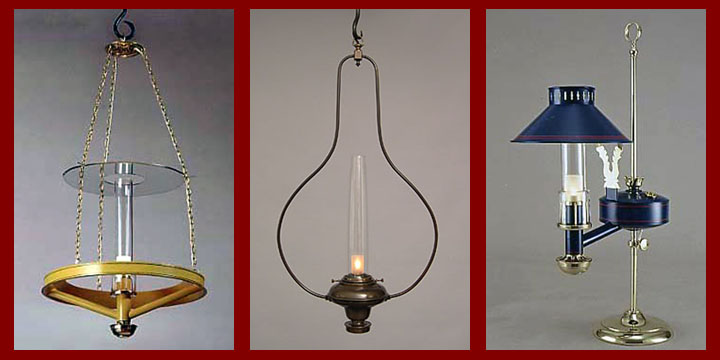



|
These fixtures were supplied to the National Park Service for use at various sites around the country. They are described from left to right.
Ohio, USA This chandelier was purchased by the National Park Service for a restoration in the Akron, Ohio area at the Cuyahoga Valley National Park. The chandelier is hung in the Mustill Store, an establishment that sold dry goods and ship supplies to barge operators on the Ohio and Erie Canal. The store and a house are located adjacent to the canal lock.
Wyoming, USA Two of these solar harp lamps hang in the sutler’s store at Fort Laramie which is restored to interpret the role of the post sutler during the 1850’s and early 1860’s. During this period the store served the officers and enlisted men at the post as well as traders, trappers, Indians, and emigrant families moving west. These lamps burned lard or lard oil – a fuel that was plentiful in the Midwest due to the vast number of hogs that were raised for slaughter for just this purpose – all of the hog except for the hind quarters was devoted to lard and oil production. While the use of kerosene as a lamp fuel was increasing rapidly during the 1860’s, research showed that lard or lard oil was most likely the fuel used for lamps in this geographical area in this time period. Solar lamps employed a central draft system that utilized a round, tubular wick. This, in conjunction with a deflector that increased the draft over the flame, greatly enhanced the level of illumination over that of other types of lighting. Solar lamps got their name from manufacturer's advertisements that compared the bright level of the lamps illumination to that of the sun.
Sitka, Alaska A pair of these Argand student lamps is located in a building at the Sitka National Historical Park in Sitka, Alaska. They are in the Russian bishop's house, the oldest intact piece of Russian architecture that dates back to 1842. These lamps typically burned whale or colza oil although other similar such fuels that were indigenous to specific geographical areas were often used as substitutes. |
